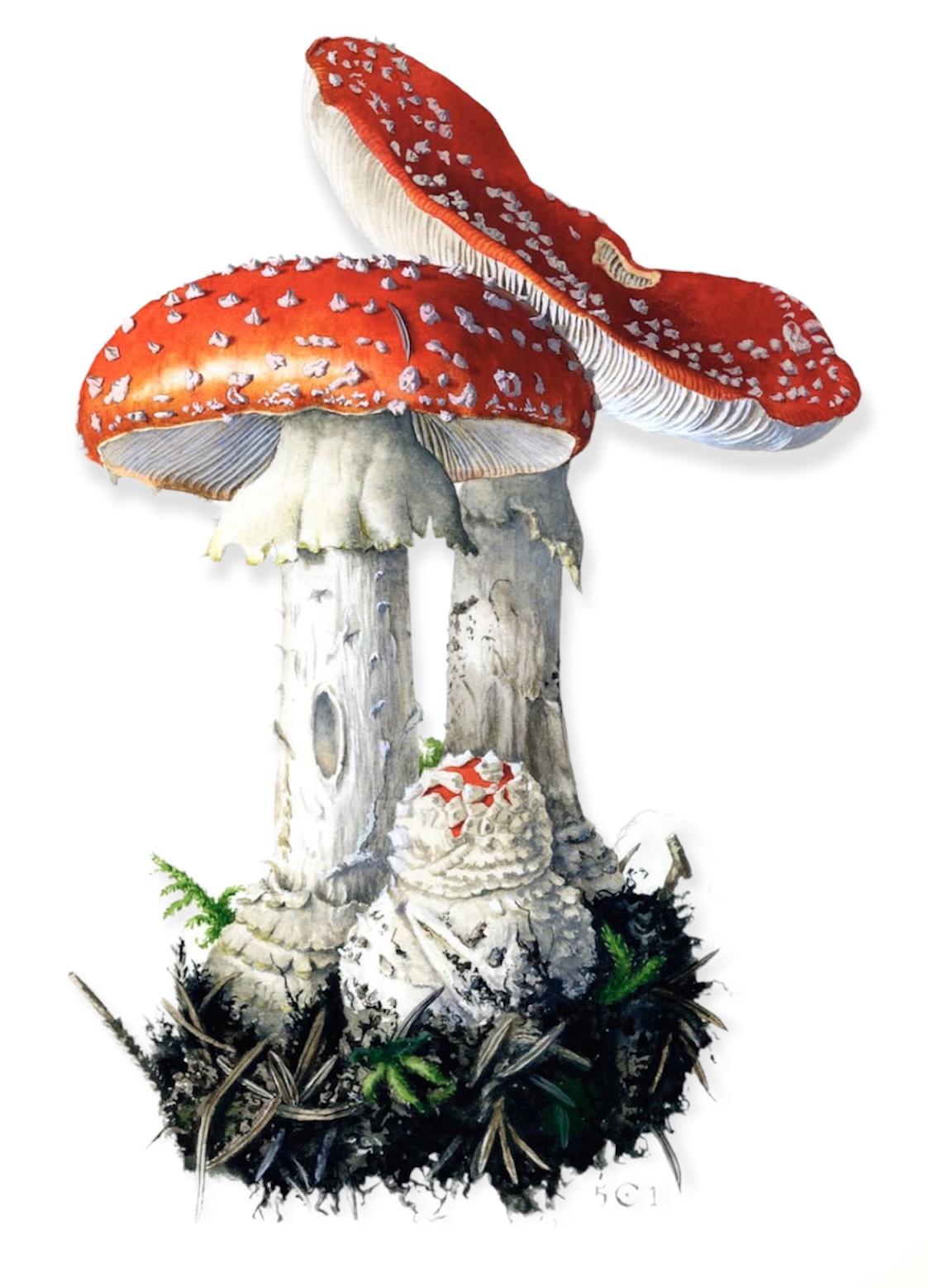Why fly agaric is red?
- AmanitaMicrodose®

- May 15, 2022
- 2 min read
Updated: Sep 26, 2022
Today, at the doorstep of Red Moon, we will try to guess why fly agaric is red? This leads to next important group of compounds present in Amanitas namely: the pigments...

The exact purpose of fungi coloration is not fully known. Some of fungal pigments are identical or close related to those of flowers and fruits other are totally different. The role of plant pigments is obvious i.e. fotosynthesis and reproduction by attracting animals to flowers and fruits, yet mushrooms seem to have no evolutionary interest in drawing attention of insects and animals. There is certain theory saying that pericap's skin colorations serves as a light filter to deretmine specific wavelenghts comming to inner tissues. This suppose to allow and catalyse biosynthesis of many complex compounds not present in animal, plant and bacteria kingdoms. Muschrooms are champions of biosynthesis and pharmacology of wierd and freaky compounds and, moreover, many of it originate only in pericaps in the presence of sunlight but are not produced by underground mycelium. Here the role plays muscarufin that gives A. muscaria it's characteristic red colour. In fact nobody really knows why mushrooms, being quite a simple organisms, are producing such wide variety of complex and advanced organic compounds. We may only say "keep working mushrooms, we are really amazed".
The other role of pigments is protective. In this case most important is muscaflavin. This orange-red pigment is produced by many species of mushrooms and acts as antibacterial, antifungal and virostatic agent. Laboratory research show activity of muscaflavin against many human and plant pathogenic bacteria and fungi at the level of standard pharmaceutical drugs! This means possibility to replace synthetic antibiotics. Moreover it acts anti-inflammatory, analgesic and accelerate wound healing.
The last group are betalains which were recognized as powerful antioxidants and radical scavenging compounds that attract reaserchers for their protective properties against oxidative stress-related disorders.






Comments